This guide will help you find the right Korean translation service for your needs.
It covers:
- what to expect
- how to get good translation on a budget
- and more!
I’ve been running a translation business since 2013.
Here’s what I’ve found!
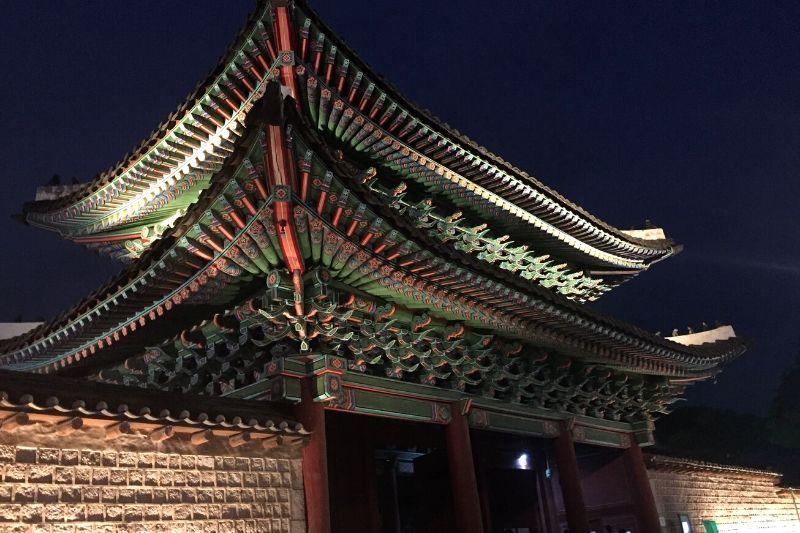
English and Korean are night and day.
As you can imagine, it’s one of the hardest language pairs to translate.
Don’t worry though, Korean translation can be simple. Here are three ways to get translation according to your needs:
1. Personal Use
Individuals for images, shopping websites, webtoons, signs and menus while traveling
- Quality: the overall meaning with potential errors
- Delivery: Immediate
Use Papago or Google Translate
2. Professional Use
Startups and new business for internal communication, social media posts, user reviews, emails and letters
- Quality: human translation without QC
- Delivery: At least a day
Use Fiverr
3. Advanced Use
Established companies for presentations, legal documents, reports, mobile apps and website localization
- Quality: human translation usually with QC like proofreading and review
- Delivery: Longer than a day
Use a reputable company specialized in the language pair you need
The problem is most translation companies claim to be the best at every language pair.
They all have a different procedure and price too.
After a decade of being both clients and service providers, we’ve seen that Korean and English translation is where most fall short.
Here’s what we’ve discovered!
Definitions
- Source language: the original language of a file
- Target language: the language to be translated into
- Characters: spaces, letters, numbers and punctuation
- Character count: number of characters
- Words: written combination of characters representing meaning
- Word count: number of words
- Sentence: combination of words that comprise a statement or question
- Page: number of words or characters that comprise one page, usually 250 words or 700 characters
- Page count: number of pages based on word or character counts
- Translation software: any program designed to speed up or make the translation process more efficient
- Exact match: a sentence that is a 100% match with a previous one
- Fuzzy match: a sentence that is a less than 100% match with a previous one
- Terminology: a list of words that are used in a field or study
- Reference: a file in both source and target languages created to guide a translator
Why is it hard to find a good Korean translation company?
Translation is estimated to be a 50 billion dollar industry in 2020.
There are thousands of translation companies in the world.
Most tackle every language under the sun.
Like going to a restaurant with a 10 page menu, they do everything, but nothing well.
That’s because they don’t specialize in one language pair and outsource to the lowest bidder. This makes sense given their high fixed costs, including office space, employees and advertising.
The end result is average translation at a high price.
How to find a good Korean translation company?
It helps to avoid companies with generic names.
Anything with “trans” in the name is probably not a good bet. Your project will most likely be outsourced.
Avoid companies that have hundreds of employees and multiple offices.
This just means they need to charge a premium to make payroll and keep the lights on.
Also, having a legal and marketing team has no effect on translation quality.
It’s also a good idea to find one that specializes in Korean language pairs.
Look for a company owned and operated by a Korean and English speaker.
One with documents that are checked in-house by the stakeholders.
When in doubt, shop around and compare quality.
Where can I find a good Korean translation company?
Online is a good place to start.
Google will return millions of results, but most aren’t focused on Korean translation.
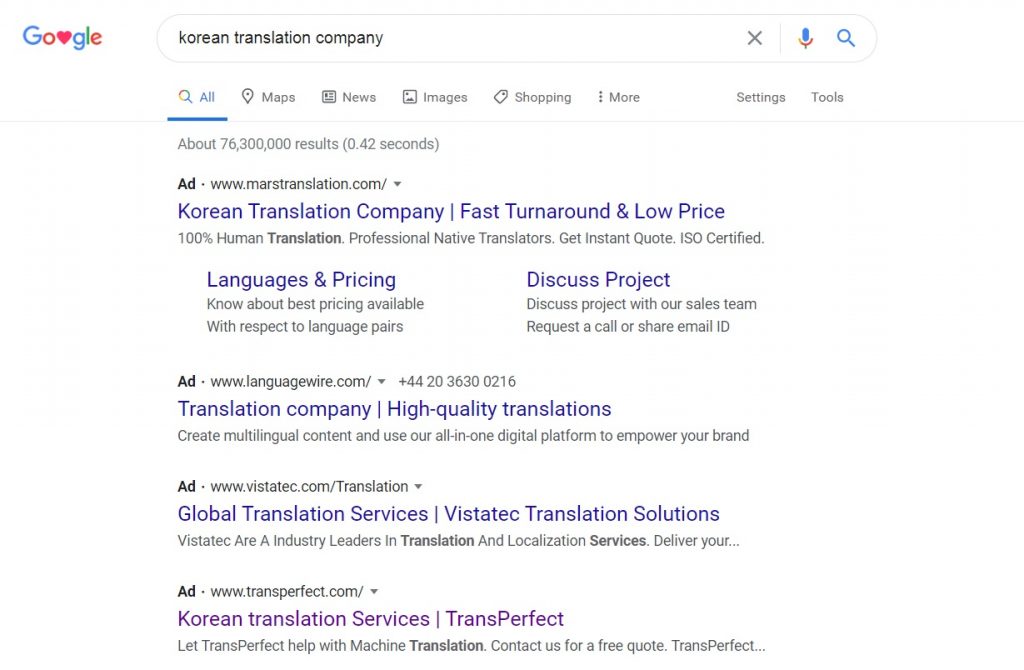
High ad budgets don’t equal good translation.
Companies spend a lot of money to be the top search result, which you’ll end up paying for.
There’s also no guarantee you’ll get better quality since it’s up to the translator they choose.
Where can I find Korean translation on a Budget?
Fiverr offers services a level above machine translation for a reasonable price. It’s a great option when you need something decent right away.
A word of warning, the Fiverr community tends to leave positive reviews, probably because the services are inexpensive. It’s a good idea to look at the negative reviews and see if they’re valid.
How do I find a good Fiverr gig for Korean translation?
Look for native speakers in the target language. For example, if you have English text that needs to be translated into Korean, find someone who was born and raised in South Korea. There are exceptions to this rule, so you’ll have to experiment.
Check “About this Gig” and “About this Seller” for typos and grammar mistakes. If you’re translating into Korean, then you can be more forgiving about awkward wording in English.
Scroll to the “Reviews” near the bottom.

Click “Sort By” in the upper right-hand corner of the container. Choose “Most recent” and check the next five to ten reviews. People can improve or burn out. This will give you an idea of how well they’ve been translating recently.

Click the “1 Star” reviews and look for any red flags.

For extra-sensitive documents, consider using a proofreader.
Check out some Fiverr gigs below!

How much does a Korean translation company charge?
If you contact ten companies, you’ll get 10 different prices.
Korean translation companies charge by the page.
Pages are determined by word count.
For English to Korean, 250 words equals 1 page.
For Korean to English, 700 characters is 1 page.
The price range is 20-100 USD for a 250 word page.
A better question would be, “how much should you pay a Korean translation company per page?“
30-70 USD for a page is a reasonable range.
With technical translation such as legal and medical documents being at the higher end.
If you’re spending less, then you’re most likely getting machine translation.
Any more, and you’re paying for the CEO’s vacation home.
Why are pages calculated this way?
Font size and formatting can be changed to manipulate how many words are on a page.
By counting the actual number of words or characters, you can get a standard amount of content on a page.
Why should you use a Korean translation company?
I know what you’re thinking. “Why should I pay that amount when I can get a freelancer on Fiverr for half the price?”
If you can afford to have errors in your translation, then you’d be correct.
However, if you need professionally translated documents with no errors, then a company is what you’re looking for.
Other advantages are:
- Peace of mind. Most companies provide some sort of quality control. This can include proofreading, review, grammar check, etc.
- Accurate files. A reputable company will have a project manager checking files to make sure nothing is left out.
- On time delivery. Having worked with freelancers, I can tell you that getting files on-time is not always a given. Translation companies often have guarantees for timely delivery.
How to save money with a Korean Translation company
Before sending a document, take a moment to look it over carefully and see what needs to be translated.
In our experience, there are often redundant sections and non-vital sentences.
You can reduce your translation costs by a large percentage this way.
Ask your project manager to remove numbers and symbols from the word count.

Ask for a discount on duplicate sentences.
Translation agencies use translation software to count repetitions in a file.
You can avoid paying twice for the same work.
Don’t be afraid to check for volume discounts on large files.
Most Korean translation companies will subtract 5 to 10 percent on files over 1,000 USD.
The bigger the file, the less cost per page in terms of admin.
What to do before contacting a Korean translation company
Check their company website to see their procedure.
Reputable translation companies will make this easy to find in plain language.
Ask them to clarify how they manage projects if needed.
Make sure they have both a proofreader and an internal review system.
This will increase the chance that you won’t need to retranslate their files.
Even after all this, it’s a good idea to have critical documents reviewed independently before showing them to customers.
How should I contact a Korean translation company?
The best way is to send an email directly or through a contact form.
It’s nice to talk on the phone sometimes, but ultimately the document is what matters.
For the fastest results, send your file so you can receive a quote.
How to work with a Korean translation company
The more you put in, the more you get out.
It’s a good idea to provide a terminology list and ask your project manager to keep it updated.
This is your insurance in case you have to switch companies at some point.
It will keep terms consistent in translated documents.
Make sure to ask for revisions if they’re required.
Also, send them any revisions you make, even if they’re simple.
This will help them understand your needs and save you both work in the long-run.
How to save time and money on revisions
There are many ways to translate a sentence.
It’s impossible for a project manager to know which style suits you.
You can help out by providing a reference.
A reference file includes the original text and the translation side by side.
This lets translators know what kind of tone you prefer.
If you don’t have a reference, be sure to explain who the translation is intended for.
The more details you provide, the better your results.
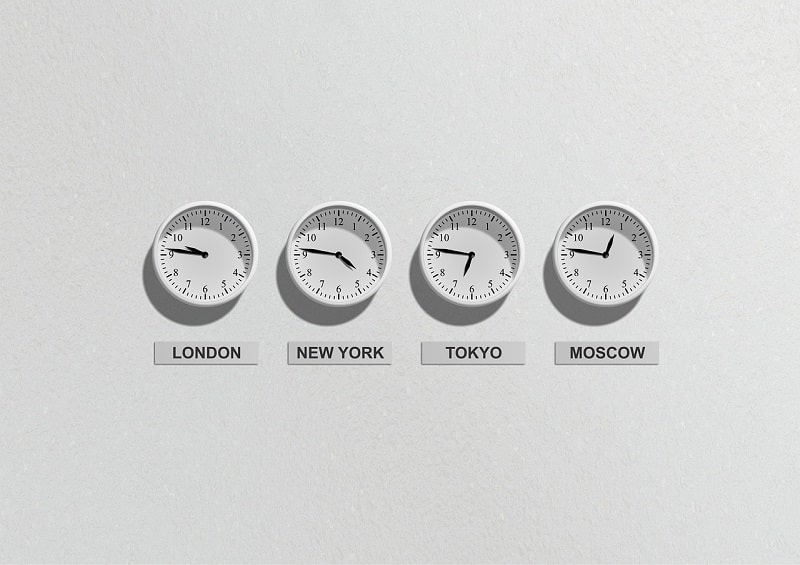
How long does Korean translation take?
It can be easy to forget about the translation step in your document creation process.
With all the technological advances in machine translation, you might think it only takes a few hours to crank out quality work.
We may have been promised flying cars by now, but usable translation still requires a lot of human labor, which takes time.
Try not to request deadlines that are too tight.
An experienced translator can do between 1,500 to 2,500 words per day.
Any more and they might be tempted to split the file with another translator, leaving you with a bunch of sentences that lack continuity.
You also need to provide time for proofreading and review, otherwise you’ll end up doing it.
5 pages (around 1,250 words) take at least 48 hours to translate and polish.
How to get consistent quality from a Korean translation company
Great results don’t happen overnight.
It takes a few files for even the best translators to find the right word choices.
Good ones will always improve their quality.
After 10 years we still find ways to make our translation more accurate and easier to read.
Look for project managers who ask the right questions to provide better results.
Once you get the quality you desire from a Korean translation company, be sure to let them know.

You can request the same translator and proofreader.
A good translation company will be happy to receive any kind of feedback.
Never hesitate to voice your concerns or appreciation.
How does Korean to English translation service work?
Since you will be starting with a Korean document, word count will be calculated differently.
Most companies will use character count.
This can be found on MS Word documents at the bottom left corner. Click the word count and a box will appear.
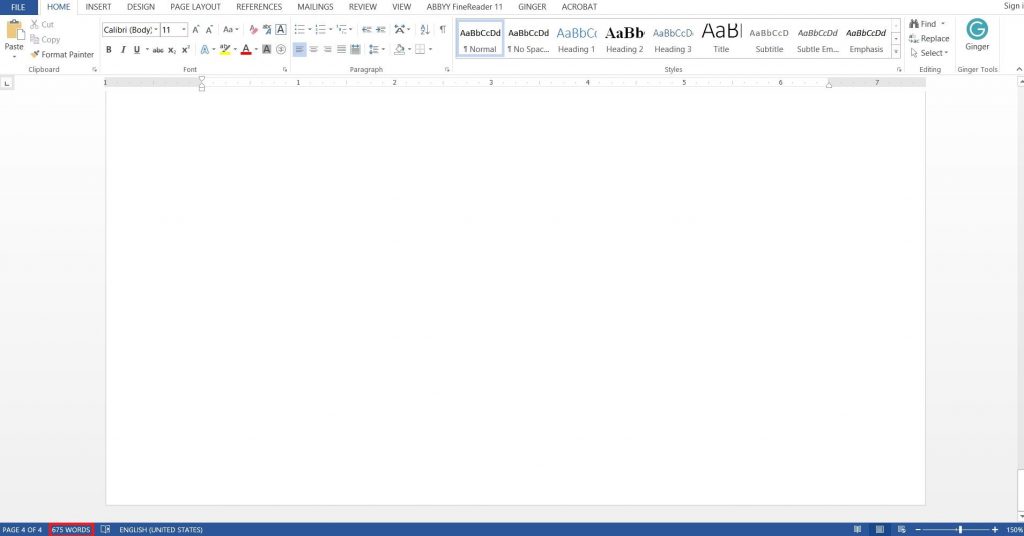
There you can see the character (with spaces) field.
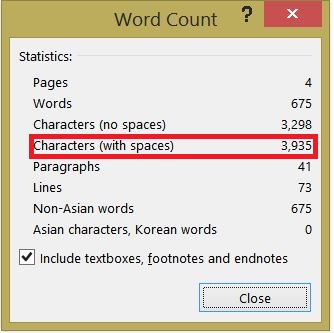
Some companies will use translation software for a more detailed count.
They can see the number of matching lines and fuzzy matches (matches that are not exact).
How does English to Korean translation service work?
Since you’ll be starting with an English document, page count will be calculated by simply using the word count.
This can be found at the bottom left-hand side of an MS Word document.


Why you should choose Lingua Asia Translation
Since our company is owned and operated by a native Korean and English speaker, we understand the nuances between the languages.
We know that having the best Korean translator is not enough.
Native speakers in both Korean and English are needed to provide the highest quality.
And Lingua Asia stakeholders are involved in every step of the process.
We even developed a system of collaboration between native translators that is beyond ISO 9001 quality control.
Our procedure has been refined over the past 10 years.
The result is Korean translation that doesn’t miss a beat.
When you’re too busy to jump through the hoops, you can count on us to deliver flawless work.
How do I get Korean translation service from Lingua Asia?
We believe simplicity is the highest form of sophistication.
Our procedure is designed to be efficient as possible, while providing quality translation.
The procedure below shows the extent of your involvement. There are more steps on our end.
- You send us a file.
- We provide a quote.
- You confirm the quote by sending payment along with terminology or references you’d like us to use.
- We translate, proofread and review the file in house.
- We deliver the file on time.
- You check the file and provide feedback if there is any.
What is your procedure for Korean translation service?
- Once you send us a file by email, we provide an accurate quote
- After you confirm, we have a meeting on how best to handle your project
- We upload your file into OmegaT translation software to organize it and make sure nothing is missed
- A professional translator with a minimum 5 years of experience translates using online research tools and
databases - It’s proofread with tracked changes so they can be discussed
- Then it’s reviewed by both a Korean and English speaker together to ensure balanced translation
- We use Ginger Software to smooth out the writing
- We run a spelling and grammar check to catch any errors we might have missed
- A native English speaker reads the file once more to make sure it flows and sounds natural
- Finally, it’s delivered to you on-time and complete
What Korean translation services we provide
It’s important to know what you’re getting before you buy.
Here are the services included with every project we deliver:
- Personal project manager to provide you with consistent service
–Tired of the run around? Get one point of contact to simplify your life - Free Quote in plain terms to clarify what you are buying
– Not sure how translation costs are calculated? We make everything transparent so you know what you’re paying for - Accurate deadline and word count to save you time and money
– Need results on time and on budget? Get files before your deadline - Sample of our previous work (upon request), so you know what you are getting
– Afraid to buy something for the first time? Check out our quality before you commit, so there are no surprises - Customization when you provide terms or a document you would like us to use as a guide
– Does your industry use unique terminology? We can incorporate terms and follow styles seamlessly - Translation by a professional translator (minimum 5 years’ experience) in your field, so nothing is missed
– Worried about translation quality? We’re careful about who we work with, because we want happy clients - Proofreading by a native speaker in your final language for translation that sounds natural
– Don’t have time to proofread? We include it in every project, so you can rest easy - Collaboration between the translator and proofreader for the perfect balance of accurate and natural translation
– Don’t want translation that sounds like it was done by a machine? We make sure your documents are made for humans, by humans - Internal review by company stakeholders to guarantee your translation is ready for use
– Tired of average quality? Our company founders check every file, so you don’t have to - On time delivery so you can focus on what you do best
– Worried about deadlines? We make sure you get your files on-time
By providing these services with every translation project, we make Korean translation easy.
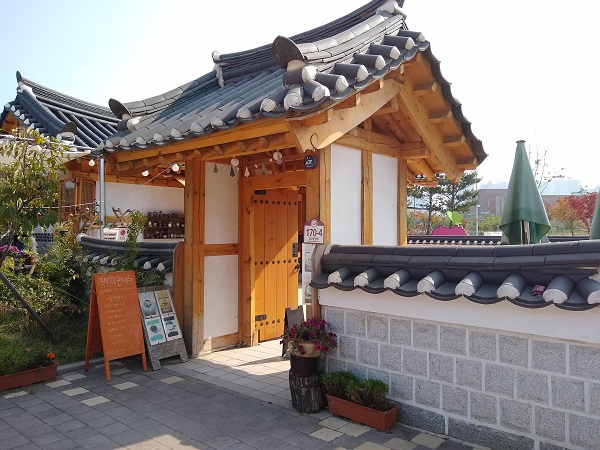
Korean Industry Experience
Korean work culture is known for being very intense.
Koreans work the highest number of hours per year.
As a result, Korea has one of the most robust economies in the world.
It has the 5th largest export economy and the 6th most complex economy, according to the Economic Complexity Index(ECI).
Providing translation services in this environment can be demanding as well as rewarding.
After 10 years of translating for top 10 companies in Korea, including Samsung, LG, and Hyundai, we’ve seen it all.
Doing business in Korea can be challenging, but choosing Lingua Asia Translation will make it easier.
We translate, proofread and review documents in house.
We provide high quality English and Korean translation services to numerous entities including cosmetic, finance and pharmaceutical companies as well as legal firms, government offices and tech giants.
We also handle the localization of software and websites to and from Korean.

Korean Document Translation Services
We have extensive experience translating Korean documents in most file formats including Hangul Word Processor(HWP), MS Word, PowerPoint and Excel (for PDF, Adobe Photoshop, and Adobe Illustrator formats, additional editing fees may apply).
We excel at translating Korean documents into English as well.
Korean Cosmetic Translation
Cosmetics companies were our first major clients.
K-beauty is one of the more robust industries and has a lot of demand for translation.
They need their documents promptly and error-free since they often present them directly to buyers.
The stakes are high and a single typo can be the difference between a million-dollar deal or “we’ll think about it”.
We developed many good habits while working with these companies, such as punctuality and clear communication.
Some of the projects we worked on are:
- Korean cosmetic translation of marketing materials such as presentations, brochures and blogs
- SNS including, Instagram and Facebook posts as well as tweets
- Contracts and supplier agreements
- Meeting notes
- Research articles
Korean Legal Translation
We are always excited to perform legal translation.
Since details are so crucial in this field, we can further show how we excel compared to the competition.
We scour every inch of contracts multiple times to make sure nothing is overlooked, since there is no room for error.
Any ambiguity can cost our clients big time in the future, so we always go over unclear clauses with them.
We pride ourselves on never having a client issue with our legal translation.
Our experience includes:
- Korean legal translation of commercial contracts, employment contracts, distribution agreements, sales agreements and company statutes
- Regulations, lawsuits, complaints and letters of intent
- Patent and IP document translation
- Terms and conditions
Korean Technical Translation
Technical translation is a broad category that covers anything requiring a technical or scientific background in both source and target languages.
Lingua Asia Translation has had the privilege of being involved with pill press manufacturing and power plant projects.
We always try to explain terms clearly and objectively to help readers perform a predefined task.
We provide a wide range of high quality Korean technical translation services.
This includes:
- Korean Translation of patents and patent applications
- Technical drawings and engineering documents
- Technical manuals, user guides and web content into Korean
- Equipment catalogs, data sheets and schematics
- Scientific and white papers
- Technical E-learning modules for online use
Korean Medical Translation
Medical translation requires the utmost care given the sensitive nature of its subject matter.
Lives are at stake and one error can cause irreparable harm.
Unfortunately, Korean medical translators with experience in western and eastern medicine are hard to find.
Lingua Asia Translation provides a wide range of high quality Korean medical translation services for some of the world’s leading companies.
We have worked with dental implant and pharmaceutical companies as well.
Our experience also includes:
- Korean translation of clinical, regulatory, and technical documentation
- Clinical trial materials such as clinical protocols, clinical study agreements, patient diaries, drug labels and inserts
- Medical devices including operating manuals and user guides
- Localization of medical software
- Brochures and web content
- Medical bulletins
Korean Patent Translation
With the rise of globalization, international patents are more important than ever.
Korean patent translation is a vital part in gaining legal protection for corporate IP.
We have translated the following:
- Patent claims
- Legal documentation relating to a patent dispute
- Descriptions and drawings
- Prior art/abstracts
Korean Energy Translation
Korean Solar Energy and Photo-voltaic Technology are among the best in the world.
We especially love working with this field, because it’s so technical.
Also, we can contribute to a cleaner and more habitable planet for all life.
We have had the privilege of translating many types of content for this industry.
This includes:
- Korean Solar Energy company profiles
- Marketing material
- Website content
Korean Product Manual Translation
Korea has a very dynamic consumer culture.
Products from all over the world can be found in stores there.
We have helped many international companies enter the Korean market with clear and concise product manuals.
Learning Korean
Guided conversation is the fastest way to get fluent in Korean. Pimsleur takes you from 0 to conversational in 90 days. You can try Pimsleur here for free!
Let’s Hear from You
Thank you for reading!
Let us know your questions about Korean translation service in the comments!
Disclosure: There are affiliate links in this article that provide us a small commission at no extra cost to you. We only endorse the best language learning tools we use ourselves. Find out more about our code of ethics.